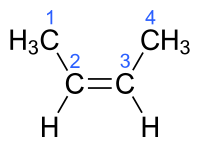
Photo from wikipedia
Gold(I) complexes are considered active species towards oxidative addition, and current understanding indicates a different mechanism in contrast to other late transition metals, but a rational understanding of the reactivity… Click to show full abstract
Gold(I) complexes are considered active species towards oxidative addition, and current understanding indicates a different mechanism in contrast to other late transition metals, but a rational understanding of the reactivity profile is lacking. Herein, we propose that the accessibility of the gold(I) center to tri- or tetra-coordination is critical in the oxidative process involving a tri- or tetra-coordinate gold(I) with the oxidizing reagent as one of the ligands as an intermediate. A computational study of the geometry of (Phen)R3PAu(I)NTf2 complexes shows that the accessibility of such tri-coordinate species shows a good correlation with the 'trans influence' of phosphine ligands: the weak σ-donating phosphine ligands promote tri-coordination of gold(I) complexes. The oxidative addition to the asymmetric tri-coordinate (Phen)R3PAu(I)NTf2 complexes with alkynyl hypervalent iodine reagents was built. The kinetic profile of the oxidative addition exhibits a good relationship to the Ham-mett substituent parameter (ρ = 3.75, R2 = 0.934), in which the gold(I) complexes bearing less σ-donating phosphine ligands increase the rate of oxidative addition. The positive ρ indicates a high sensitivity of the oxidative addition to the trans influ-ence. The reactivity profile of oxidative addition to linear bis(pyridine)gold(I) complex further supports that the oxidative addition to gold(I) complexes are promoted by ligands with small trans influence.
Journal Title: Journal of the American Chemical Society
Year Published: 2019
Link to full text (if available)
Share on Social Media: Sign Up to like & get
recommendations!